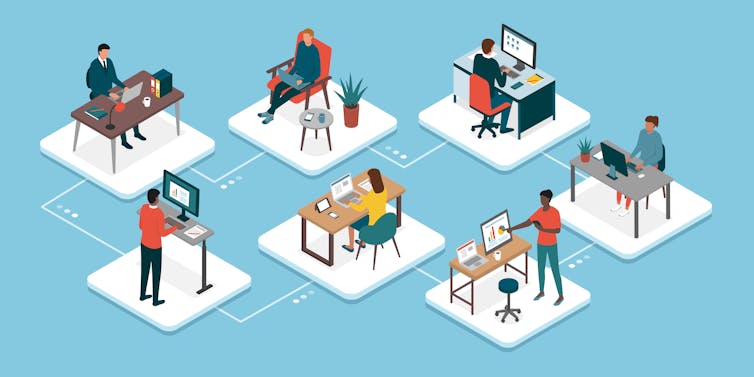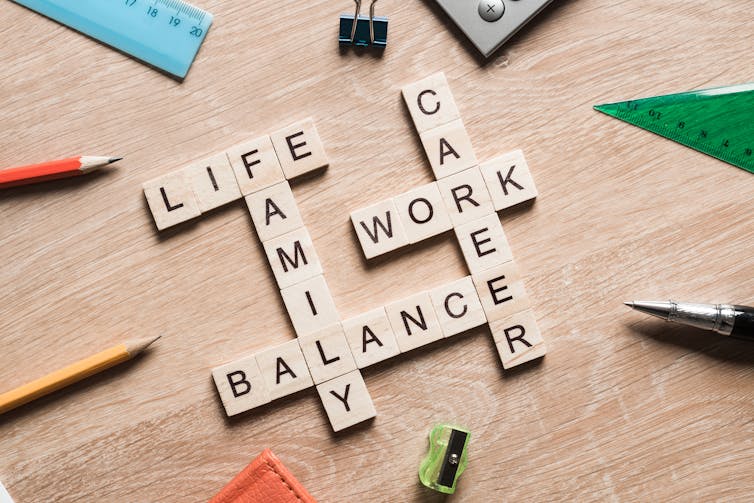Home » Posts tagged 'Work' (Page 2)
Tag Archives: Work
My Work Experience at University College London Interaction Centre (UCLIC)
By Hywel Jenkins
During my five-day work experience at the University College London Interaction Centre, I had the opportunity to engage deeply with the realms of science communication, research inclusivity, and the integration of artificial intelligence in academic and professional settings. My work experience supervisor was Prof. Anna Cox. This post discusses my daily experiences, covering the activities I completed, the knowledge I gained, and the challenges I faced.
Day 1: Introduction and Exploration

On the first morning, I completed a brief tour of the UCL campus and the UCLIC office, which included a fire safety induction. This tour was not just to help me with orientation; it also provided a historical context, as I visited Jeremy Bentham, the founder of UCL. Learning about Bentham’s contributions set the stage for understanding UCL’s long-standing commitment to progressive education and research. Later in the morning, I watched several YouTube videos on science communication. These videos were important for laying the groundwork for my week’s projects, as they introduced me to the fundamentals of creating effective science communication artefacts. Initially, I felt nervous at the sheer volume of information and the tasks ahead, but this session helped mitigate some of my stress by providing a clear framework for approaching my assignments.

In the afternoon, I attended an event at the Equalities Research Centre, which focused on making research more equitable and inclusive. The session was interesting as it showcased the various initiatives within UCL’s brain sciences faculty aimed at fostering inclusivity. One thing I learned from this was the different impacts of various types of dementia on brain functions, such as memory and language skills.
Day 2: Blog Post Creation and Workshop Attendance
The second day began with downloading and reviewing the work of master’s students, which I would later feature in a promotional blog post for my Work Experience Supervisor. This task was both educational and demanding. I delved into diverse topics, including the effective use of large language models (LLMs) through prompt engineering, the benefits and challenges of the gig economy, and the integration of AI in the workplace. Furthermore, I attended a meeting with Yoana, one of my work experience supervisor’s PhD students, to gain deeper insights into her project. This meeting was important as I learned valuable information in it which I needed for my upcoming tasks.
In the afternoon, Anna had to assist with a workplace workshop, and I joined, observing from the back of the room. During this time, I utilised AI tools like ChatGPT to draft the promotional blog post. This experience was particularly beneficial as it demonstrated how AI can streamline the creative process and enhance productivity. However, staying focused amidst the ongoing workshop was a bit challenging due to the long time period that it went on for.
Day 3: Finalising Blog Post and Starting Information Page
On the third morning, I finished the blog post about the master’s students’ work. This task helped me to improve my skills in prompt engineering, and my overall skills in using AI tools for creating content. Following this, I attended a team meeting that offered further insights into the projects of Yoana and another PhD student, Shiping. The information I learned here was important for my second major project of the week.
In the afternoon, I began working on creating an information page for Anna’s website, which detailed the ongoing research projects within her research group. This involved finding information from different sources I had come across during the week, including my notes from meetings, posters, and research papers which Anna gave me. Later, I attended a seminar by a guest speaker from America (Prof Orit Shaer) who discussed the use of virtual reality (VR) for remote work. The seminar (which you can watch on YouTube here) highlighted the benefits of VR in enhancing focus, reducing stress, and improving convergent thinking in team settings. The day concluded with another exploration of the UCL campus, in order to go and see the previous homes of UCLIC within UCL.

Day 4: Continuing Projects and Starting Work Experience Report

The fourth day was primarily focused on continuing and nearly completing the information page about my work experience supervisor’s research group, using AI to help me make the logo opposite for these projects. Working from home presented some concentration challenges, but I managed to stay focused and learned many things from the ongoing research projects in the research group, including about the Research compliance buddy being created and the research on the use of AI tools in academia.
In the afternoon, I began working on my final project, this report writing about my work experience experiences at UCLIC. This involved reflecting on the week’s activities and thinking about what I had learned this far into my week. I also continued to refine my skills in using AI tools to aid in report writing. Concentrating for extended periods without breaks was difficult, but I managed to push through and make most of the progress that I needed to on this task.
Day 5: Finishing my tasks off on the final day
My morning was primarily focused on completing the remainder of the tasks which I had left. I worked on feedback from my supervisor, learning how to write more engaging texts and how to more easily proofread my work, by using the text to speech feature in Microsoft word. Following this work, I began to work on some ideas for social media posts to act as an advertisement for a survey that my supervisor is running.
Following my lunch break, I continued to work on these twitter posts, trying to make the most eye-catching and interesting advertisements to try and draw in the target audience of UK academics, lecturers and PhD students, leveraging both LLMs for ideas and AI image creation models such as Dalle 3 to achieve this. Following this, Anna showed me how to add the different artefacts that I had created over the week to word press, the tools she uses to create her website so that my work could appear on the website.
Conclusion
My work experience at UCLIC was both enriching and insightful. It provided a comprehensive understanding of the intersection between science communication, research inclusivity, and AI integration as well as what life working at a university is really like. Despite initial nervousness and challenges due to my unfamiliar environment, I successfully completed my assigned tasks. This experience significantly enhanced my skills in using AI tools, understanding inclusive research practices, and effectively communicating scientific ideas. It has been a pivotal experience that has contributed greatly to my personal and professional growth, helping me to better consider my career and educational decisions for the future.
’Jumping Out from the Pressure of Work and into the Game: Curating Immersive Digital Game Experiences for Post-Work Recovery
Mella, J., Iacovides, I., & Cox, A. (2024). ’Jumping Out from the Pressure of Work and into the Game: Curating Immersive Digital Game Experiences for Post-Work Recovery. ACM Games: Research and Practice.
In this paper we explore how digital games can be used for psychological recovery after work. We conducted a study involving eleven participants who played games post-work and participated in follow-up interviews.
Key points:
- Immersion in Gaming for Recovery: The study focuses on how immersion in gaming can aid in the recovery from work-related stress. Immersion is seen as a multifaceted experience that can help players detach psychologically from work stresses and recover their mental resources.
- Strategies for Immersive Experience: Participants reported various strategies to enhance their gaming immersion to optimize recovery. These strategies included selecting games based on their ability to provide challenge, mastery, relaxation, or a sense of control.
- Framework of Immersion Optimization: The research contributes a framework for understanding how different elements of games can be used strategically to facilitate recovery. This includes aspects such as game choice, gameplay settings, and in-game goals.
- Impact of Gaming on Recovery Experiences: The study found that strategic gaming can effectively provide recovery experiences such as psychological detachment, relaxation, and mastery. These experiences are crucial for recuperating after work and preventing long-term stress effects.
- Methodological Insights: The use of a laddering methodology provided detailed insights into the specific components of gaming that support recovery. This approach highlighted the direct connections between game features, player experiences, and recovery outcomes.
- Implications for Game Design and Use: The findings suggest that both game developers and players can benefit from understanding how different game features can be used to enhance post-work recovery. The study advocates for games designed with features that support recovery needs.
Every wondered how to get someone to reply to your email?
Me this week: why is this guy chasing me for a reply today when he only emailed me on Thursday?
Also me this week: how come that person I emailed on Wednesday last week STILL hasn’t replied?
We’ve all spent time hitting the refresh button on an inbox waiting for a reply to an email we’ve sent and wondering what’s holding things up. The truth is, people send urgent emails before others and if they think a reply to your email is not urgent and is going to take them ages to write, you might be waiting a really long time!

Our frustration waiting for others to reply to our emails led us to investigate which factors influence how quickly people respond to emails and whether there’s anything we can do as a sender to get them to choose to reply to us before answering someone else’s message!The results of our study of 45 people responding to 16,200 e-mails sent over a 3 week period show that when e-mail replies are not urgent, people wait to a later time to send replies rather than responding immediately. However, when they do respond they are more likely to tackle the messages that are easier to respond to (eg needing a short reply) and those that carry the greatest importance (eg when there’s something in it for the sender). In contrast, when presented with e-mails that need an urgent reply, people prioritize these and disregard factors such as length of reply.

Our results are important for all of us who use e-mail and want timely responses. Composing e-mails that clearly signal that an urgent response is needed is the best way to ensure that the receiver will deal with it promptly. If it’s not urgent, making clear that you just need a short response will mean your email gets replied to before others.
Anna L. Cox, Jon Bird, Duncan P. Brumby, Marta E. Cecchinato & Sandy J. J. Gould (2021) Prioritizing unread e-mails: people send urgent responses before important or short ones, Human–Computer Interaction, 36:5-6, 511-534, DOI: 10.1080/07370024.2020.1835481
How did people respond to the disruption to work caused by the pandemic?
Our paper “The new normals of work: a framework for understanding responses to disruptions created by new futures of work” has just come out in Human-Computer Interaction Journal.
Open access to the paper is available here: https://www.tandfonline.com/doi/full/10.1080/07370024.2021.1982391
In the paper, we explore how people adapted to work during the pandemic and how we might understand people’s response to disruption in the new future of work. We highlight a number of issues, tools and strategies that people used in their work to support them while working remotely. For example, virtual commutes, having dedicated space, new scheduling techniques or staying connected with colleagues through virtual chats and async chats
Exploring these with the Genuis and Bronstein model of “new normal” we show 3 kinds of responses:
- waiting to return to old normal,
- finding a new normal and
- anticipating a new future of work.
These new normals of work help us to understand how we can help workers going forward.

We’d like to thank our reviewers for their feedback and our participants for helping develop our work within eworklife.co.uk and a special shoutout to @DilishaBP whose work with the new normal model inspired this work 😀 You can find their paper on Finding a “New Normal” for Men Experiencing Fertility Issues here: dl.acm.org/doi/abs/10.114…
If you find this interesting you might also like our other papers on work during the pandemic:
- Disengaged From Planning During the Lockdown? An Interview Study in an Academic Setting Yoana Ahmetoglu; Duncan P. Brumby; Anna L. Cox (2021) IEEE Pervasive Computing
- Staying Active While Staying Home: The Use of Physical Activity Technologies During Life Disruptions Joseph W. Newbold, Anna Rudnicka and Anna Cox (2021) Frontiers in Digital Health
- Eworklife: Developing effective strategies for remote working during the COVID-19 pandemic A Rudnicka, JW Newbold, D Cook, ME Cecchinato, S Gould, AL Cox (2020) The New Future of Work Online Symposium
The first draft of this blogpost was written as a twitter thread by Joe Newbold and unrolled using ThreadReader
The great remote work experiment – what happens next?

Sam Wordley via Shutterstock
Daniel Merino, The Conversation and Gemma Ware, The Conversation
In this episode of The Conversation Weekly, four experts dissect the impact a year of working from home has had on employees and the companies they work for – and what a more hybrid future might look like. And we talk to a researcher who asked people to sit in bathtubs full of ice-cold water to find out why some of us are able to stand the cold better than others.
For many people who can do their job from home, the pandemic meant a sudden shift from office-based to remote working. But after a year of working from home, some company bosses really don’t want it to become the new normal. The chief executive of Goldman Sachs, David Solomon, called it an “aberration”, and Barclays chief executive Jes Staley said it wasn’t sustainable, because of how hard it is to maintain culture and collaboration with teams working remotely.
Meanwhile, others are fully embracing a remote work future. Twitter said its employees could work from home forever, and Spotify announced a “work from anywhere” policy. Other firms are starting to announce more hybrid policies, where people are expected to split their week between the home and the office: in March, BP told employees they would be expected to work from home two days a week.
In this episode, we talk to researchers who have been studying the shift to remote working during the pandemic about their findings. In France, Marie-Colombe Afota, assistant professor in leadership, IÉSEG School of Management in France, talks us through the initial results of a new study she did in late 2020 of 4,000 employees at a large French multinational. “The more employees felt that the organisation generally values being visible in the office, the more they felt expected to be constantly available while in remote work,” says Afota. “And, in turn, two months later, the less they felt productive and happy in remote work.”
A year of working from home has left some people close to burnout, according to Dave Cook, a PhD researcher in anthropology at University College London who has been interviewing people about their experiences of shifting to remote work during the pandemic. “Burnout and work-life balance is the forgotten public health emergency that’s emerging through throughout this lockdown,” he tells us. And he says that companies should start communicating with their staff now about what the future has in store: “So their employees can get on with planning the rest of their lives.”
For others, the shift to remote work has been a surprisingly good experience. Jean-Nicolas Reyt, an assistant professor at McGill University in Montreal, has been tracking the language that chief executives in North America used to talk about remote working in 2020. “What you see is that actually that misconception, that telework is just not as efficient as co-located work, has vanished for a lot of CEOs,” he tells us. “A lot of CEOs and a lot of employees are saying it was forced, but it’s actually pretty good.”
Ruchi Sinha, a senior lecturer in organisational behaviour and management at the University of South Australia, gives the view from Australia, where hybrid working is already becoming a reality, and where most invitations to a face-to-face meeting now come with a video link too. But Sinha says that opportunities to shift to a fully flexible way of working may be being missed, with companies implementing new policies as rigid as the old ones. “I don’t think we are spending enough time thinking about are we giving people choice to shape their jobs, to shape what they do,” she tells us.
In our second story, we find out that your genes influence how resistant you are to cold temperatures. To test this, scientists asked a group of men to sit in bathtubs full of icy water to measure their reaction – and how much they shivered. Victoria Wyckelsma, a postdoctoral research fellow in muscle physiology at the Karolinska Institutet in Sweden, explains what they found and what it means.
And Sunanda Creagh from The Conversation in Australia gives us some recommended reading about the recent floods in Sydney.
Read more:
‘They lost our receipts three times’: how getting an insurance payout can be a full-time job
The Conversation Weekly is produced by Mend Mariwany and Gemma Ware, with sound design by Eloise Stevens. Our theme music is by Neeta Sarl. You can find us on Twitter @TC_Audio or on Instagram at theconversationdotcom. We’d love to hear what you think of the show too. You can email us on podcast@theconversation.com
A transcript of this episode is available here.
News clips in this episode are from CNN, CNBC News, CBC News, NBC News, Arirang News, World Economic Forum, Goldman Sachs, AlJazeera English, 7 News Australia, Sky News Australia,, Euronews, DW News and Jornal da Record.
You can listen to The Conversation Weekly via any of the apps listed above, our RSS feed, or find out how else to listen here.![]()
Daniel Merino, Assistant Editor: Science, Health, Environment; Co-Host: The Conversation Weekly Podcast, The Conversation and Gemma Ware, Editor and Co-Host, The Conversation Weekly Podcast, The Conversation
This article is republished from The Conversation under a Creative Commons license. Read the original article.
Media interview: ‘If you switch off, people think you’re lazy’: demands grow for a right to disconnect from work
Prof Anna L Cox is quoted in The Guardian’s article ‘If you switch off, people think you’re lazy’: demands grow for a right to disconnect from work
How the pandemic will shape the workplace trends of 2021

Elenabsl/Shutterstock
The economist John Maynard Keynes predicted in 1930 that the amount we work would gradually shrink to as little as 15 hours a week as technology made us more productive. Not only did this not happen, but we also began to spend extra time away from home due to commuting and suburban living patterns, which we often forget are recent historical inventions.
However, 2020 has changed all that. In my new history of remote work during COVID-19, I marvel at how much it has shaken up our lives and how much we took for granted. My research also points to a number of trends that will help shape working life in 2021.

Gene Daniels.
Over “in time for Christmas”
At the start of 2020 remote work was a gradually rising long-term trend. Only 12% of workers in the US worked remotely full time, 6% in the UK. Naturally the world was unprepared for mass remote work.
But COVID-19 instantly proved remote work was possible for many people. Workplace institutions and norms toppled like dominos. The office, in-person meetings and the daily commute fell first. Then the nine to five schedule, vacations and private home lives were threatened. Countries even started issuing remote work visas to encourage people to spend lockdown working in their territory.
As old norms vanished, a rapid procession of novel technologies marched uninvited into our homes. We had to master Zoom meeting etiquette, compassionate email practices, navigate surveillance, juggle caring responsibilities. The list goes on.
In the face of grim statistics – the UN predicted 195 million job losses – only the tone deaf complained about working from home. Nonetheless, COVID-19 created the biggest remote work experiment in human history.
In July, UK prime minister Boris Johnson – with Edwardian optimism – daydreamed a sense of normality would return “in time for Christmas”. Fast forward through summer to lockdown 2.0 and the fantasy of a 12-week experiment faded into sepia tinged memories. One interviewee joked: “I really thought we’d be back in the office by July, what fools we were!”
Are you disciplined?
Silicon Valley companies Google, Apple and Twitter were among the first to announce employees could work from home. Ahead of the curve, they were well practised. Predictably, they already had a fancy term for it: distributed working. In 2021 concepts such as distributed and hybrid working will proliferate.
Most were less prepared than Silicon Valley. In March, I published findings from a four-year research study tracking remote workers. I warned, to be a successful remote worker deep reserves of self-discipline were required, otherwise burnout followed.
We understand this now. But I spent the first lockdown patiently explaining to news outlets why working from home was so hard. When I suggested returning to the office might be considered a luxury – because it helped people structure their days – a news presenter laughed. For good or ill, conversations about disciplined routines will intensify in 2021.
Read more:
Remote working: the new normal for many, but it comes with hidden risks – new research
By May 2020 many reported experiencing Zoom fatigue. I naively predicted Zoom use would subside.
I’d have been right if we’d returned to the office. Instead necessity dictated we up our Zoom game – even if they were draining. Zoom simultaneously saved and ruined working from home, and it’s not going away anytime soon.

Michael D Edwards/Shutterstock
The commuting paradox
Remote workers, grateful to still have jobs, also reported a gnawing sense of survivors’ guilt. Overwork was one way of expressing this guilt. Many felt working extra hours might secure their job.
In April 2020, I joined other academics researching work-life balance on a project called eWorkLife. The research data revealed increases in working hours when it wasn’t obvious when the working day ended. Especially with no obvious signal to end the working day.
In my four-year remote study, I had noticed a strange pattern. Participants initially said “escaping the commute” was a key benefit of remote working. Yet months later these same workers started recreating mini commutes.
The eWorkLife project uncovered similar findings. People wanted to create “a clear division between work and home”. Study lead Prof Anna Cox urged people to do pretend commutes so they could maintain a work-life balance. In 2021 work-life balance must become recognised as a public health issue and the eWorkLife project is urging policymakers to act.

Khakimullin Aleksandr/Shutterstock
The right to disconnect
What’s happened to the time previously lost to commuting? Many are using it to catch up on admin and email. This taps into a worrying trend.
Pre-pandemic warnings about an encroaching 24/7 work culture were intensifying. Social scientists argued that contemporary workers were being turned into worker-smartphone hybrids. In 2016, French workers were even given the legal right to disconnect from work emails outside working hours.
A hopeful wish-list for 2021 includes continued increases in workplace activism and for companies and governments to reveal their remote working policies. Twitter and 17 other companies have already announced employees can work remotely indefinitely. At least 60% of US companies still haven’t shared their remote working policies with their employees. Remote workers tell me until bosses reveal their post-pandemic policies – planning for their future is impossible.
Read more:
Remote-work visas will shape the future of work, travel and citizenship
The late activist David Graeber described the failure to achieve Keynes’s 15-hour work week as a missed opportunity, “a scar across our collective soul”. COVID-19 may have started conversations about alternative futures where work and leisure are better balanced.
But it won’t come easily. And we will have to fight for it.![]()
Dave Cook, PhD Candidate in Anthropology, UCL
This article is republished from The Conversation under a Creative Commons license. Read the original article.
Remote-work visas will shape the future of work, travel and citizenship

During lockdown, travel was not only a distant dream, it was unlawful. Some even predicted that how we travel would change forever. Those in power that broke travel bans caused scandals. The empty skies and hopes that climate change could be tackled were a silver lining, of sorts. COVID-19 has certainly made travel morally divisive.
Amid these anxieties, many countries eased lockdown restrictions at the exact time the summer holiday season traditionally began. Many avoided flying, opting for staycations, and in mid-August 2020, global flights were down 47% on the previous year. Even so, hundreds of thousands still holidayed abroad, only then to be caught out by sudden quarantine measures.
In mid-August for example, 160,000 British holiday makers were still in France when quarantine measures were imposed. On August 22, Croatia, Austria, and Trinidad and Tobago were added to the UK’s quarantine list, then Switzerland, Jamaica and the Czech Republic the week after – causing continued confusion and panic.
This insistence on travelling abroad, with ensuing rushes to race home, has prompted much tut-tutting. Some have predicted travel and tourism may cause winter lockdowns. Flight shaming is already a cultural sport in Sweden, and vacation shaming has even become a thing in the US.
Amid these moral panics, Barbados has reframed the conversation about travel by launching a “Barbados Welcome Stamp” which allows visitors to stay and work remotely for up to 12 months.
Prime Minister Mia Mottley explained the new visa has been prompted by COVID-19 making short-term visits difficult due to time-consuming testing and the potential for quarantine. But this isn’t a problem if you can visit for a few months and work through quarantine with the beach on your doorstep. This trend is rapidly spreading to other countries. Bermuda, Estonia and Georgia have all launched remote work-friendly visas.
I think these moves by smaller nations may change how we work and holiday forever. It could also change how many think about citizenship.
Digital nomads
This new take on visas and border controls may seem novel, but the idea of working remotely in paradise is not new. Digital nomads – often millennials engaged in mobile-friendly jobs such as e-commerce, copywriting and design – have been working in exotic destinations for the last decade. The mainstream press started covering them in the mid-2010s.
Fascinated by this, I started researching the digital nomad lifestyle five years ago – and haven’t stopped. In 2015, digital nomads were seen as a niche but rising trend. Then COVID-19 paused the dream. Digital nomad Marcus Dace was working in Bali when COVID-19 struck. His travel insurance was invalidated, and he’s now in a flat near Bristol wondering when he can travel.
Dace’s story is common. He told me: “At least 50% of the nomads I knew returned to their home countries because of CDC and Foreign Office guidance.” Now this new burst of visa and border policy announcements has pulled digital nomads back into the headlines.
So, will the lines between digital nomads and remote workers blur? COVID-19 might still be making international travel difficult. But remote work – the other foundation of digital nomadism – is now firmly in the mainstream. So much so that remote work is considered by many to be here to stay.
Before COVID-19, office workers were geographically tethered to their offices, and it was mainly business travellers and the lucky few digital nomads who were able to take their work with them and travel while working. Since the start of the pandemic, many digital nomads had to work in a single location, and office workers have become remote workers – giving them a glimpse of the digital nomad lifestyle.

© Dave Cook and Tony Simonovsky, Author provided
COVID-19 has upended other old certainties. Before the pandemic, digital nomads would tell me that they despised being thought of as tourists. This is perhaps unsurprising: tourism was viewed as an escape from work. And other established norms have toppled: homes became offices, city centres emptied, and workers looked to escape to the country.
Given this rate of change, it’s not such a leap of faith to accept tourist locations as remote work destinations.
A Japanese businessman predicted this
The idea of tourist destinations touting themselves as workplaces is not new. Japanese technologist Tsugio Makimoto predicted the digital nomad phenomenon in 1997, decades before millennials Instagrammed themselves working remotely in Bali. He prophesied that the rise of remote working would force nation states “to compete for citizens”, and that digital nomadism would prompt “declines in materialism and nationalism”.
Before COVID-19 – with populism and nationalism on the rise – Makimoto’s prophecy seemed outlandish. Yet COVID-19 has turned over-tourism into under-tourism. And with a growing list of countries launching schemes, it seems nations are starting to “compete” for remote workers as well as tourists.
The latest development is the Croatian government discussing a digital-nomad visa – further upping the stakes. The effects of these changes are hard to predict. Will local businesses benefit more from long-term visitors than from hordes of cruise ship visitors swarming in for a day? Or will an influx of remote workers create Airbnb hotspots, pricing locals out of popular destinations?
It’s down to employers
The real question is whether employers allow workers to switch country. It sounds far-fetched, but Google staff can already work remote until summer 2021. Twitter and 17 other companies have announced employees can work remotely indefinitely.
I’ve interviewed European workers in the UK during COVID-19 and some have been allowed to work remotely from home countries to be near family. At Microsoft’s The New Future of Work conference, it was clear that most major companies were mobilising task forces and would launch new flexible working policies in autumn 2020.
Countries like Barbados will surely be watching closely to see which companies could be the first to launch employment contracts allowing workers to move countries. If this happens, the unspoken social contract between employers and employees – that workers must stay in the same country – will be broken. Instead of booking a vacation, you might be soon booking a workcation.![]()
Dave Cook, PhD Researcher, Anthropology, UCL
This article is republished from The Conversation under a Creative Commons license. Read the original article.
Five workplace trends will shape life after lockdown

We are experiencing the biggest remote work experiment in history – but many are beginning to imagine life after lockdown. Amid unprecedented global job losses, concerns about transport infrastructure and the continuing need for workplace social distancing, governments are launching back-to-work plans.
Meanwhile, the latest US research reveals that 74% of businesses want some workers to permanently work remotely and business leaders are actively shedding leased office space – hinting that not everyone will go back to the office.
Here are five key trends that will shape the future of how we work.
1. Commuting will change forever
We might miss the social interaction of the office, but most don’t miss commuting. This was one of the key findings in my four-year remote work study.
Before lockdown, US commute times reached record levels and most UK workers spent more than a year of their lives travelling to and from work. People tell me that a hybrid strategy of working from home two days a week, is one ideal scenario.

Shutterstock
Those eager to go back to the office will have to wait. Many will need to work from home for weeks or months to come. The situation is fluid, but governments are drawing up plans for workers to stagger working times, so public transport is not overwhelmed.
The genie is out of the bottle, and commuting is not going back to how it was.
2. Bad email etiquette won’t be tolerated
Workplace communication is rapidly transforming and email is a case in point. More than ever, creating a clear separation between work and leisure time is vital.
Research repeatedly shows that sending out-of-hours emails is not only bad etiquette – but creates a coercive work culture that requires people to be available 24/7. Social scientists argue this turns us into worker/smartphone hybrids and causes stress and burnout. Expecting quick answers to email is increasingly seen as bullying.
Many now realise that colleagues might need to work flexibly due to caring responsibilities. Lockdown has encouraged a new acceptance of flexibility. But this shouldn’t extend to having a culture that expects people to be available all the time.
3. Video calls will be limited
Zoom calls will remain part of our lives – but we will change and adapt how we use them. Research shows that video calls are more draining and tiring than in-person meetings.

Shutterstock
While video calls are appropriate for some meetings, we don’t need to use them for all our communication. Research suggests many are shifting back to phone calls – which as one manager explained to me “feels more spontaneous and flows better”.
4. More co-working spaces will emerge
Workers forced to continue working from cramped living spaces are desperate for alternatives. When lockdown lifts they will turn to the cafes and co-working spaces that are still in business. Before COVID-19 hit, co-working spaces were projected to increase more than 40% worldwide.
The paradox of remote working is that people crave the flexibility but know that being around others boosts productivity. My research shows that over time remote workers crave the physical closeness that comes with just being alongside other people. It’s exactly why in 2017 IBM pulled many employees back into the office, despite having previously published a 2014 white paper in support of remote working.

Shutterstock
Local co-working spaces, as opposed to big investor-funded brands such as WeWork, will do well. Independent co-working spaces in some areas were thriving before COVID-19 – they may become more mainstream if they survive lockdown.
5. Could we become part-time digital nomads?
Digital nomads are extreme remote workers that post Instagram stories from exotic locations. Right now, that lifestyle seems unrelatable, impossible and to many unethical.
Nonetheless, many decently paid workers in New York, London and Paris are stuck in uncomfortably small flats, dreaming of escape from lockdown. As a housing manager recently confided to me: “London living without nightlife and culture, isn’t fun. Everyone wants to escape to somewhere outdoorsy when allowed. I’m not sure I approve but it’s understandable.”
For now, remote working from different locations is not allowed. But the allure of relocating to a picturesque location remains – and Brian Chesky, CEO of AirBnB, is banking on it. He sees COVID-19 as a business opportunity and told Bloomberg: “People are realising they can work remote … that’s a huge opportunity.”
Not all will agree – it could cause long-term sustainability issues – and many will not have this privilege. But when lockdown fully lifts, who’s to say more people will not work remotely from different parts of the world, beyond their living rooms.![]()
Dave Cook, PhD Researcher, Anthropology, UCL
This article is republished from The Conversation under a Creative Commons license. Read the original article.

